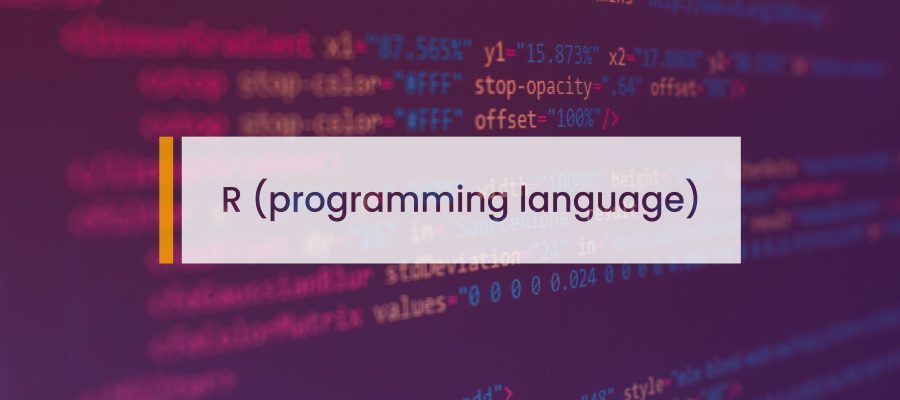R is a programming language and free software environment for statistical computing and graphics supported by the R Foundation for Statistical Computing. The R language is widely used among statisticians and data miners for developing statistical software and data analysis. Polls, data mining surveys, and studies of scholarly literature databases show substantial increases in popularity; as of November 2019, R ranks 16th in the TIOBE index, a measure of popularity of programming languages.
A GNU package, source code for the R software environment is written primarily in C, Fortran, and R itself and is freely available under the GNU General Public License. Pre-compiled binary versions are provided for various operating systems. Although R has a command line interface, there are several graphical user interfaces, such as RStudio, an integrated development environment.
R and its libraries implement a wide variety of statistical and graphical techniques, including linear and nonlinear modeling, classical statistical tests, time-series analysis, classification, clustering, and others. R is easily extensible through functions and extensions, and the R community is noted for its active contributions in terms of packages. Many of R’s standard functions are written in R itself, which makes it easy for users to follow the algorithmic choices made. For computationally intensive tasks, C, C++, and Fortran code can be linked and called at run time. Advanced users can write C, C++, Java. NET or Python code to manipulate R objects directly. R is highly extensible through the use of user-submitted packages for specific functions or specific areas of study. Due to its S heritage, R has stronger object-oriented programming facilities than most statistical computing languages. Extending R is also eased by its lexical scoping rules.
Another strength of R is static graphics, which can produce publication-quality graphs, including mathematical symbols. Dynamic and interactive graphics are available through additional packages.
R has Rd, its own LaTeX-like documentation format, which is used to supply comprehensive documentation, both online in a number of formats and in hard copy.
Like other similar languages such as APL and MATLAB, R supports matrix arithmetic. R’s data structures include vectors, matrices, arrays, data frames (similar to tables in a relational database) and lists. Arrays are stored in column-major order. R’s extensible object system includes objects for (among others): regression models, time-series and geo-spatial coordinates. The scalar data type was never a data structure of R. Instead, a scalar is represented as a vector with length one.
Many features of R derive from Scheme. R uses S-expressions to represent both data and code. Functions are first-class and can be manipulated in the same way as data objects, facilitating meta-programming, and allow multiple dispatch. Variables in R are lexically scoped and dynamically typed. Function arguments are passed by value, and are lazy—that is to say, they are only evaluated when they are used, not when the function is called.
R supports procedural programming with functions and, for some functions, object-oriented programming with generic functions. A generic function acts differently depending on the classes of arguments passed to it. In other words, the generic function dispatches the function (method) specific to that class of object. For example, R has a generic print function that can print almost every class of object in R with a simple print(objectname) syntax.
Although used mainly by statisticians and other practitioners requiring an environment for statistical computation and software development, R can also operate as a general matrix calculation toolbox – with performance benchmarks comparable to GNU Octave or MATLAB.
The main R implementation is written in R, C, and Fortran, and there are several other implementations aimed at improving speed or increasing extensibility. A closely related implementation is pqR (pretty quick R) by Radford M. Neal with improved memory management and support for automatic multithreading. Renjin and FastR are Java implementations of R for use in a Java Virtual Machine. CXXR, rho, and Riposte are implementations of R in C++. Renjin, Riposte, and pqR attempt to improve performance by using multiple processor cores and some form of deferred evaluation. Most of these alternative implementations are experimental and incomplete, with relatively few users, compared to the main implementation maintained by the R Development Core Team.
TIBCO built a runtime engine called TERR, which is part of Spotfire.
Microsoft R Open is a fully compatible R distribution with modifications for multi-threaded computations.
R has local communities worldwide for users to network, share ideas, and learn.
There is a growing number of R events bringing its users together, such as conferences (e.g. useR!, WhyR?, conectaR, SatRdays), meetups, as well as R-Ladies groups that promote gender diversity.
The above is a brief about R Programming Language. Watch this space for more updates on the latest trends in Technology.
